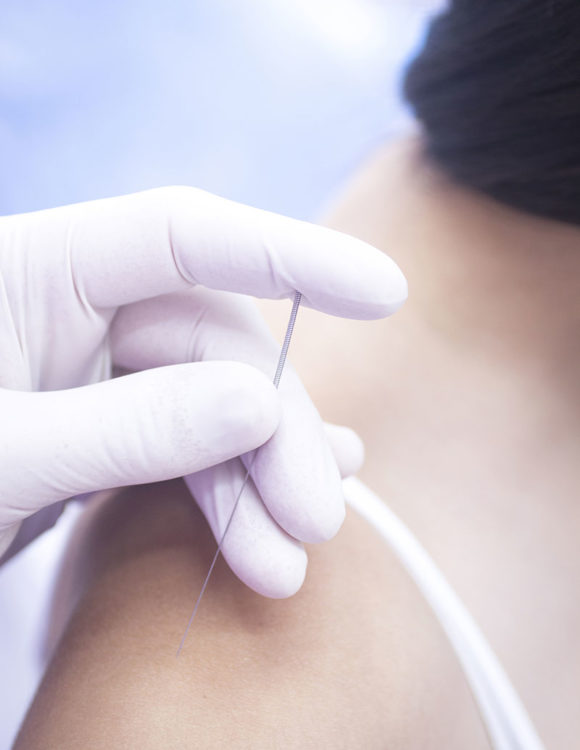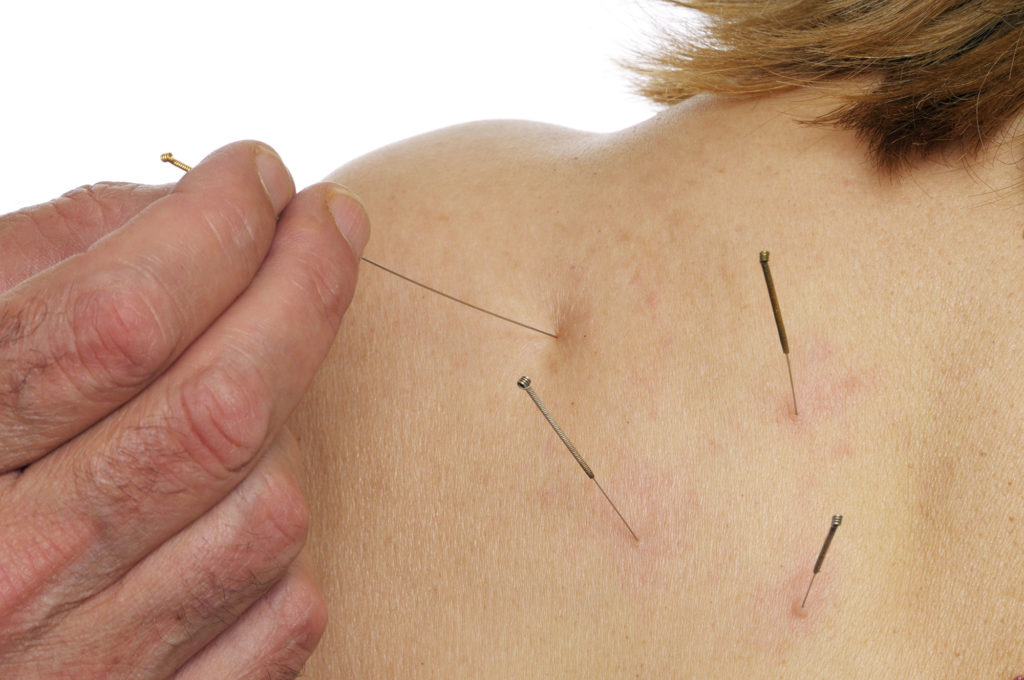Biomedical Dry Needling, Calgary
Dry Needling
Dry Needling is a technique physical therapist use (where allowed by state law) for the treatment of pain and movement impairments. The technique uses a “dry” needle, one without medication or injection, inserted through the skin into areas of the muscle.
Other terms commonly used to describe dry needling, include trigger point dry needling, and intramuscular manual therapy.
Dry needling is not acupuncture, a practice based on traditional Chinese medicine and performed by acupuncturists. Dry needling is a part of modern Western medicine principles, and supported by research 1.
What is a Trigger Point?
A trigger point is a taut band of skeletal muscle located within a larger muscle group. Trigger points can be tender to the touch, and touching a trigger point may cause pain to other parts of the body.
What Kind of Needles Are Used?
Dry needling involves a thin filiform needle that penetrates the skin and stimulates underlying myofascial trigger points and muscular and connective tissues. The needle allows a physical therapist to target tissues that are not manually palpable.
Why Dry Needling?
Physical therapists use dry needling with the goal of releasing or inactivating trigger points to relieve pain or improve range of motion. Preliminary research 2 supports that dry needling improves pain control, reduces muscle tension, and normalizes dysfunctions of the motor end plates, the sites at which nerve impulses are transmitted to muscles. This can help speed up the patient’s return to active rehabilitation.
As part of their entry level education, physical therapists are well educated in anatomy and therapeutic treatment of the body. Physical therapists who perform dry needling supplement that knowledge by obtaining specific postgraduate education and training. When contacting a physical therapist for dry needling treatment, be sure to ask about their specific experience and education.


Conditions that can be treated using Dry needling
A broad range of musculoskeletal problems are now successfully treated using the relatively new technique of Intramuscular Stimulation (IMS). We can treat a variety of ailments using IMS including :
- Achilles Tendonitis
- Acute Sports Injuries
- Arthritic Conditions
- Carpal Tunnel Syndrome
- Chronic Tendonitis or Bursitis
- Chronic “Whiplash” Pain
- Chronic Pain
- Golfers Elbow
- Headaches
- Iliotibial Band Syndrome
- Jaw and TMJ Pain
- Low Back Pain
- Myofascial Pain Syndrome
- Myofascial Trigger Points
- Neck Pain
- Patello-femoral Syndrome
- Piriformis Syndrome
- Plantar Fascitis
- Recurrent or Persistent Injuries (including Sports Injuries)
- Repetitive Strain Injuries
- Sciatica
- Shin Splints
- Shoulder Injuries (including Frozen Shoulder)
- Spinal Disc Problems
- Tennis Elbow
- Torticollis
- Trigger Finger
Dry needling and myofascial pain syndrome
Myofascial pain syndrome is a disorder in which muscle pain appears without any trauma or muscle injury. The syndrome is characterized by all the symptoms caused by a trigger point or multiple trigger points.
The trigger points are defined by a taut band in the muscle (contraction knot) after compression, stretching or prolonged muscle overload (old injury, repetitive work, etc.). These points can be active, which means they refer pain to the areas beyond the tense muscle. They can also be latent, which means the pain is only felt locally.
Dryneedling has been demonstrated to be particularly effective for this kind of syndrome by causing micro-lesions and vasodilation in the muscles, thus prompting a controlled inflammatory reaction that promotes tissue repair and especially, deactivation of the trigger point.
Bio Medical Dryneedling involves the application of acupuncture needles into tight, painful areas in your muscles known as “Trigger Points”, or sometimes referred to as “knots” in the muscles. Dryneedling is performed to elicit a healing response in these tissues, but is different to traditional acupuncture as it is not necessarily aimed at specific “acupuncture” points. Dryneedling has been proven to be a very effective way of relaxing spasmed muscles, reducing inflammation and relieving pain.
Acupuncture has been used in China and other Asian countries for thousands of years. In the last decade western medicine has shown a growing interest in acupuncture and dryneedling (needling into trigger points in the muscles). As a result the quality and quantity of research into the benefits of needling injuries has increased. Although more research needs to be done, it is becoming clearer why needling has stood the test of time in Chinese medicine.
What is the difference between acupuncture and dry needling?
Acupuncture is a technique whereby the needles are placed in specific, pre-determined acupuncture points. These points are located along meridian channels that help the “qi” energy flow from inside the body (core organs) to more superficial tissues.
Dryneedling is a form of acupuncture where the needles are placed in muscle “trigger points”. A Trigger point is a discrete, irritable, overactive point in skeletal muscle or fascia that can be felt as a nodule or band in the muscle. Touching the trigger point reproduces the complaint of pain, so area’s of needling is dependent on therapist feel and reports of reproduction of pain.

